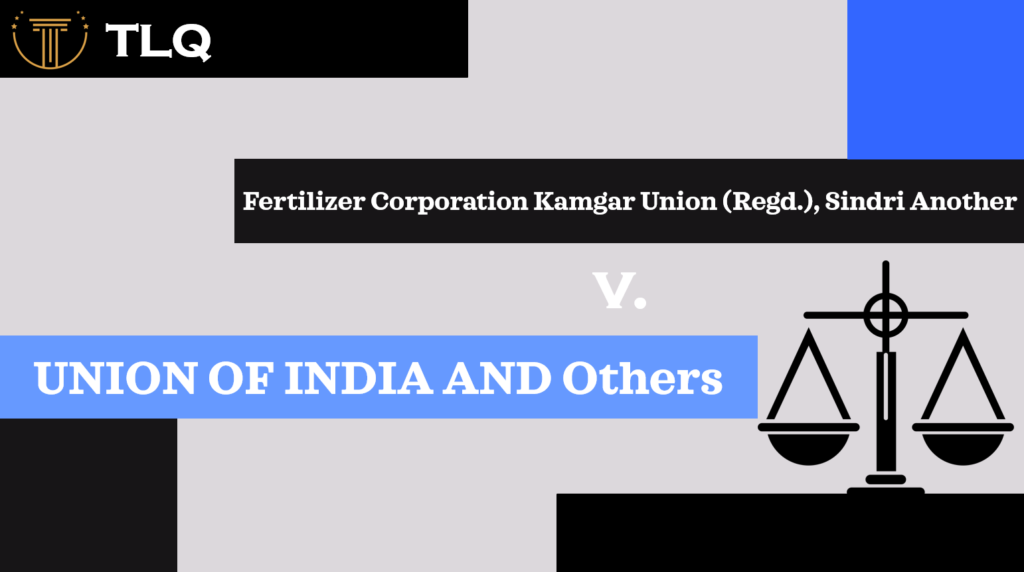Published On: November 17th 2025
Authored By: Pratikshya Priyadarsini Biswal
SOA National Institute of Law
Court: Supreme Court of India
Bench: Anand, A.S. (J), Singh N.P.(J).
Date of judgement: January 11, 1994
Relevant Statute: Indian Penal Code- sections 302, 376, and 380; Criminal Procedure Code (CrPC)- section 154
Brief Facts
Dhananjoy Chatterjee v. States of West Bengal is a landmark case in the history of Indian criminal jurisprudence, which played a crucial role in defining and shaping the application of the “rarest of the rare” doctrine for capital punishment under the Bachan Singh v. State of Punjab (1980). Dhananjoy Chatterjee was found guilty, charged under section 302 of the IPC (Murder), section 376 of the IPC (Rape), and section 380 (Theft) by the session court and was awarded the death sentence for murder.
On the evening of 5th March, 1990, Hetal Parekh, an 18-year-old student, was found dead in her flat. She was brutally raped and murdered, and Dhananjoy was the security guard of the very same building. On 4th March, 1990, Hetal and her parents complained against Dhananjoy as he kept taunting Hetal and asking her out repeatedly. As a result, Dhananjoy was transferred to another building effective 5th March. However, he was on duty in the same building on the morning of the 5th March, 1990. Hetal’s father and brother went respectively to their office and college in the morning, and in the evening, around 5:20 pm, her mother went to the temple, leaving Hetal alone in the flat. Subsequently, Dhananjoy went to Hetal’s apartment under the pretence of making a call and was up there until the supervisor called out his name and left after a few words. Hetal’s mother returned around 6:05 pm and found the door locked. With the help of the neighbours, the door was broken open, and Hetal’s body was found in the bedroom. Hetal was pronounced dead by the medical personnel.
During the investigation, it was found that Hetal was raped before her death. The doctor found 21 injuries that include a torn hymen, a fractured hyoid bone. Semen was also detected on the undergarments and the pubic hair of the deceased.
After the incident, Dhananjoy disappeared, neither picking up calls nor collecting his wages. On 12th May 1990, he was arrested in his village, and the police also retrieved the stolen watch of Hetal’s mother. During the trials, Dhananjoy pleaded innocence; he claimed that he was falsely accused. He claimed that he went to watch a movie after his duty and then to his village, but couldn’t produce evidence to prove his claim. The session court convicted him of murder under Section 302 of the IPC (murder, death sentence), Section 376 of the IPC (rape, life imprisonment) and Section 380 of the IPC (theft, 5 years of rigorous imprisonment). The High Court upheld the findings and maintained the death penalty.
Issue Raise
- Did the circumstantial evidence adequately establish to prove beyond a reasonable doubt that Dhananjoy Chatterjee was the assailant who raped and murdered Hetal Parekh?
- Should the victim’s mother’s recorded statement, given after the phone call to the police, be considered as “First Information Report (FIR)” under section 154 of the CrPC, or was there a procedural irregularity in how the crime was reported and investigated?
- Whether (if convicted) the case falls under the “rarest of rare” doctrine under the Banchan Singh v. State of Punjab (1980) to uphold the death penalty? Were there mitigation factors (example: the accused’s age, background, etc) that might counsel life imprisonment instead of death?
Argument of the Appellant
Dhananjoy, through Counsel, pleaded his innocence. He claimed that the alleged accusations were completely false and offered an alibi. He explained that on 5th March 1990, he finished his duty, went to watch a movie, and then visited his village for his brother’s thread ceremony. He alleged that he was being falsely accused of the implications because of the dispute with the deceased’s father regarding the transfer issue. He also pointed out that no one saw him committing the crime and persisted with his alibi. His counsel also urged that section 235(2) of the CrPC should be read with a humane approach. in conclusion, Dhananjoy’s counsel argued that his alleged crimes were not proven; in any event, he should be spared the extreme penalty in favour of a life term.
Argument of the Respondent
As opposed to the appellant, the state emphasised the evidence that substantively pointed towards Dhananjoy’s guilt. The counsel based its reasoning on the forensic findings that are the semen and the blood found on the victim’s body, which indicated the rape and violent struggle and the recovery of the stolen items from the accused’s house as confirming his identity as the perpetrator. Moreover, the prosecution underscored the opportunity and motive of the accused and his repetitive harassing behaviour towards the victim. Furthermore, after that incident, he disappeared without any notice, ignoring his duty and absconded, which shows a consciousness of guilt. The state urged that, as for the sentence, the accused shall be punished with no room for leniency for his brutal crime and the breach of public trust. The state argues that this case was a paradigmatic “rarest of rare” case, with no mitigation circumstances. In sum, the state urged for the death penalty as the offence was not only inhumane and barbaric but a ruthless crime of rape followed by cold-blooded murder of a helpless girl, which demands the maximum punishment.
Judgement
The Supreme Court convicted Dhananjoy upheld the death sentence. Justice Anand reviewed the evidence and the law:
- Conviction on Circumstantial Evidence: The Court applied the stringent standard governing circumstantial evidence, requiring an unbroken chain of facts consistent only with the accused’s guilt. The forensic evidence was followed by the liftman’s testimony, who confirmed that Dhananjoy had been to the victim’s apartment before her mother returned, claiming that he needed to make a phone call. Fellow guards testify that Dhananjoy was present at the apartment at the time of the crime and had also evaded his superior’s order and fled away, ignoring his duty orders. Later, the findings in the accused’s house (the victim’s mother’s watch and the blood-stained clothes). The court found no evidence to support Dhananjoy’s claim of innocence and upheld his conviction under IPC sections 302, 376 and 380.
- First Information Report (FIR): The appellant’s counsel had argued that the record statement was initially a telephonic report, and the recorded statement of the victim’s mother was treated improperly. The high court opined that the brief phone message was the first report, but the Supreme Court dissented. the Supreme Court held that the police only commenced the investigation after the mother’s formal statement; therefore, the recorded statement constituted the FIR under CrPC 154 and pointed out that the procedural point did not affect the verdict: it corrected the record of how the case was registered.
- Rarest of the Rare Doctrine: The Court upheld that the death penalty is to be imposed only on the Rarest of the Rare case, invoking section 235(2) of CrPC and Bachan Singh v. State of Punjab, (1980). Here, no mitigation was found. The accused, a 24-year-old guard, raped and strangled an 18-year-old helpless school girl in a pure, brutally cold, bloodied and barbaric manner. The court pointed out that it was a purely calculated and savage act and not something done with provocation or loss of temper. The brutality of the case and the breach of the trust where the victim was supposed to be under the protection of the accused rules out the chance of any reform. Thus, a death sentence was awarded to the Convict.
Ration Decidendi
The court based its judgment on two principles. The first one was based on the chain of facts, the circumstantial evidence, and the second one was based on the rarest of the rare case under the Bachan Singh v. State of Punjab (1980), and the death penalty can only be warranted in the rarest of the rare cases. Given the premeditated, brutal rape and murder of a helpless girl and the complete absence of mitigation factors, the court justified that to affront society, the convict shall be punished with a Death sentence.
Conclusion
The Supreme Court dismissed Dhananjoy’s appeal and upheld the decision of the High Court, which is the Death sentence. It concluded that the prosecution had irrefutably proved his guilt by circumstantial evidence, and the crime’s heinousness left no alternative penalty. This decision illustrates the Court’s adherence to strict evidentiary standards for circumstantial cases and its rigorous application of the “rarest of rare” doctrine to capital punishment. The judgment has been cited in discussions on the limits of the death penalty and the need to balance human dignity with society’s demand for justice. In Dhananjoy Chatterjee’s case, after exhausting legal remedies, the death sentence was eventually carried out on 14 August 2004. The case remains a notable example in Indian law of how the courts weigh the evidence and the nature of the crime in upholding the ultimate punishment.




